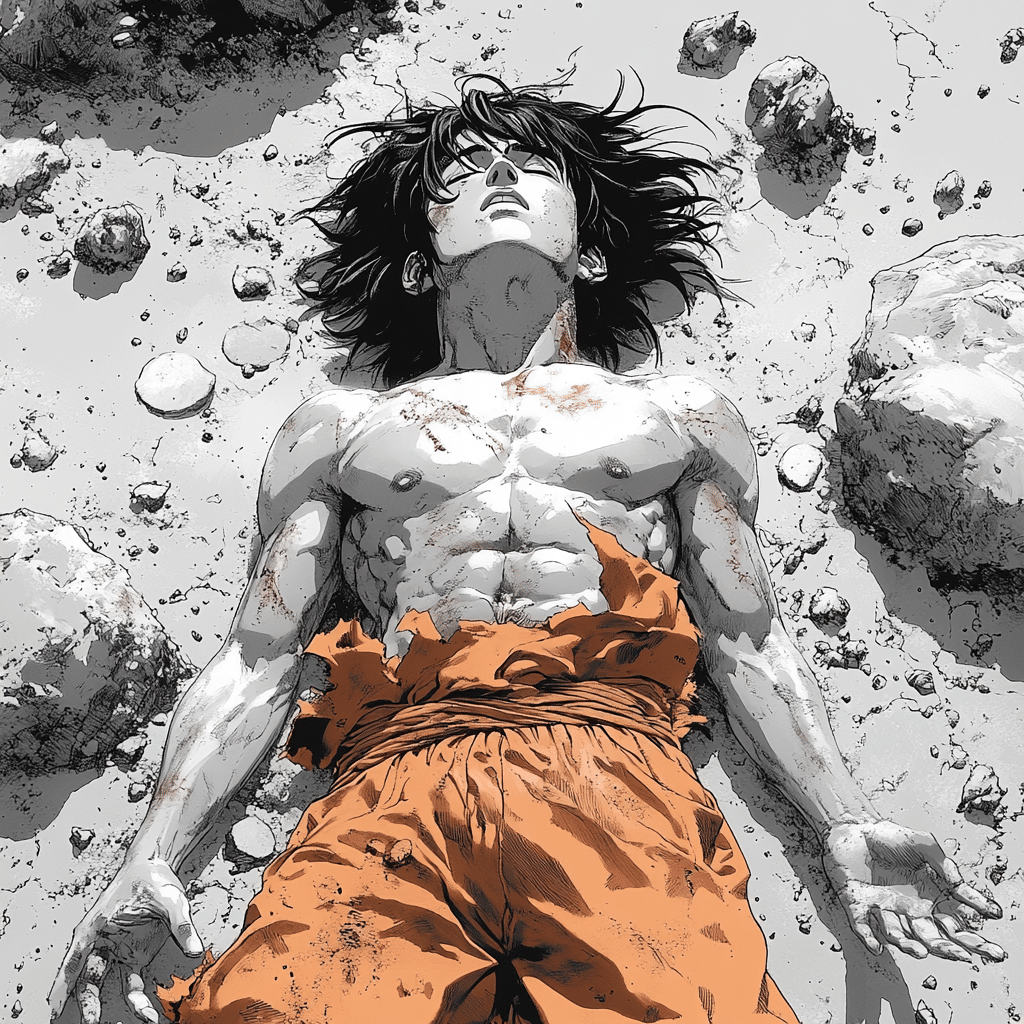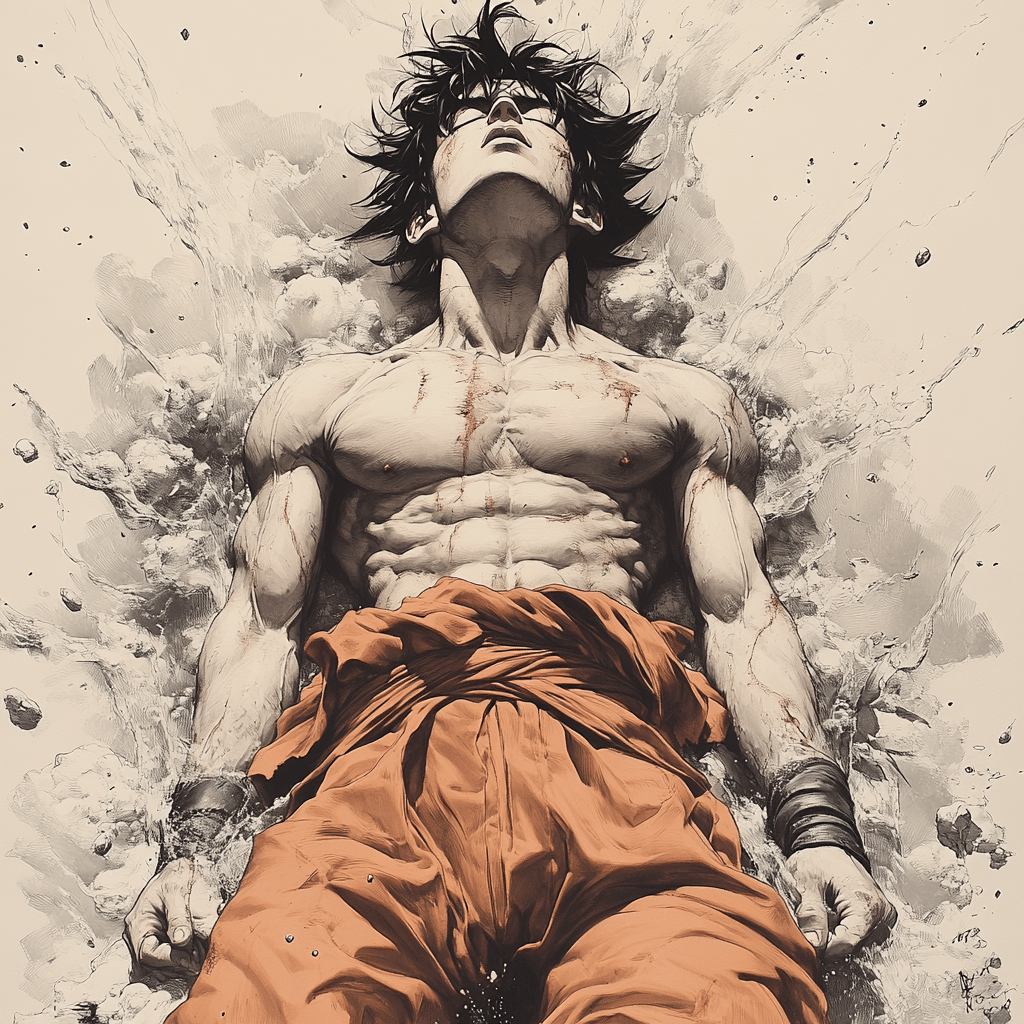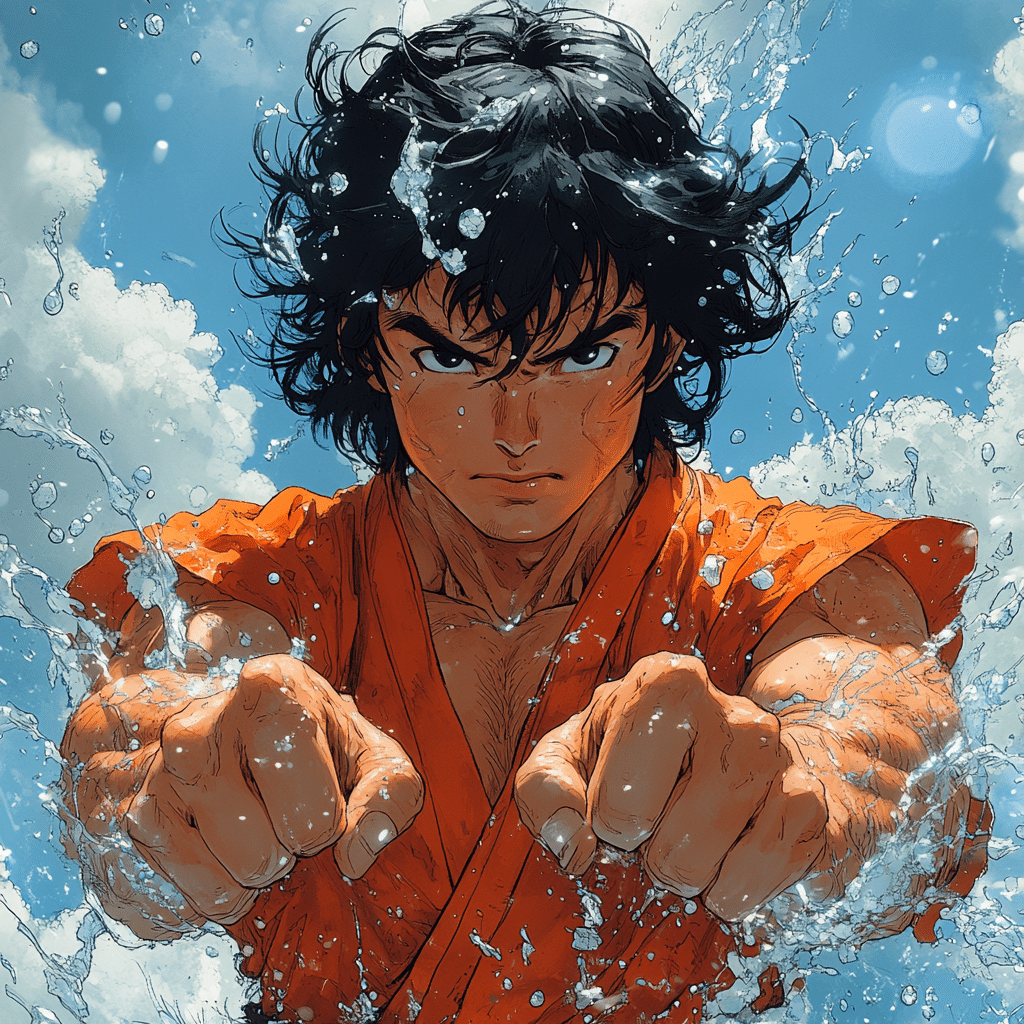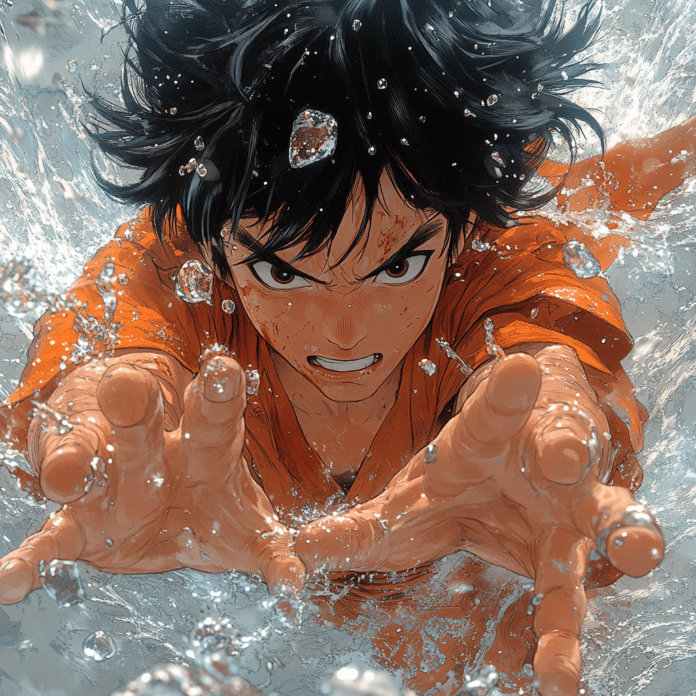The Origins of the Yamcha Death Pose in Dragon Ball
The Yamcha death pose, a striking tableau of resignation and defeat, first emerged during Yamcha’s fatal encounter with a Saibamen in the legendary series Dragon Ball. This moment, captured in the hearts of fans, wasn’t just about a character’s end; it exemplified the very essence of comedic tragedy that permeates the franchise. Conveniently, the exaggerated, sprawled gesture embodies the perfect blend of humor and sorrow, reflecting Dragon Ball’s knack for portraying not just high-octane battles but the more absurd aspects of heroism and mortality.
What’s amusing is that Yamcha, initially portrayed as a fierce warrior, met a very anticlimactic end. Intriguingly, this juxtaposition helps fans relate to sidelined characters, especially in an anime landscape often filled with overpowered heroes. This light-hearted take on defeat resonated with audiences; it became a cherished moment that ignited countless parodies, inspired fan art, and birthed countless memes, ensuring that the Yamcha death pose would live on well beyond the series itself.
For those looking closely, this moment symbolizes a deeper thematic undercurrent within the show. The pose demonstrates that loss does not equate to failure, which sets the tone for future characters facing similar fates in both Dragon Ball and other anime. It’s a comical reminder that even unsung heroes like Yamcha can momentarily succumb to the absurdity of their situations, making the pose both relatable and entertaining for fans worldwide.

Top 5 Reasons the Yamcha Death Pose Continues to Resonate
The irony of Yamcha’s demise is that it contrasts sharply with his early days as a formidable warrior. This unfortunate fall endears him to many fans who see in him a reflection of life’s unpredictability. His journey illustrates that not every hero comes out on top, and it touches on experiences many can relate to.
Over the years, the Yamcha death pose has cemented its place within meme culture. From humorous tweets to TikTok videos, fans integrate this iconic pose into a multitude of situations, blending the realm of anime with everyday life. Whether used to express failure in a light-hearted manner or as a joke on social media, its persistent relevance proves its adaptability.
Characters like Denji from Chainsaw Man tap into similar tropes of vulnerability. Denji’s misfortunes and self-deprecating humor echo Yamcha’s tragicomic struggles, creating a rich vein of shared narrative experiences. This thematic throughline resonates well, allowing audiences to connect with flawed heroes facing harsh realities similar to those presented in the Yamcha death pose.
The Yamcha death pose has transformed into a valuable asset for merchandise. Its widespread acceptance is evident, from collectibles to novelty items, including those amusing Demon Slayer Crocs that display characters in whimsical or defeated postures. This shows the crossover potential of anime influences into everyday life, proving that even moments of defeat can be commercially viable.
Online platforms buzz with insightful fan art and tributes to the Yamcha death pose. Creators reinterpret this iconic moment through various artistic lenses, encouraging dialogue and shared experiences among fans. Series like Chainsaw Man, with characters such as Reze, incorporate similar tropes, embedding the tragicomic essence throughout storytelling in modern anime.
The Yamcha Death Pose and its Parallels in Modern Anime
The Yamcha death pose echoes through numerous contemporary anime, illustrating how defeat can intertwine with humor. Recent narratives, especially those in Chainsaw Man, employ similar themes of melancholy interwoven with comedic relief. Denji’s character, much like Yamcha, exemplifies both the absurdity of their circumstances and the possibilites for growth through struggle.
Curiously, characters like Reze complicate this narrative further. She adeptly dances the line between antagonist and reluctant ally, drawing parallels with the tragically humorous essence of the Yamcha death pose. This creates a tapestry where struggles can lead to meaningful connections and relate to audiences in ways that pure victory cannot.
What’s evident is that anime often reflects real-life scenarios. The struggles of Yamcha and Denji present a spectrum of vulnerabilities that resonate deeply with fans. By embracing the Yamcha death pose, contemporary stories encourage viewers to grasp the notion that defeat holds its own brand of significance, just as poignant as the triumphs we often celebrate.

The Cultural Shift: From Failure to Resilience
The conversation surrounding the Yamcha death pose has shifted dramatically in modern anime culture. What was once a mere moment of defeat has morphed into a powerful emblem of resilience. Fans increasingly see this pose as a signpost for growth rather than just an endpoint, shifting perspectives towards a more positive interpretation.
This shift can be observed in popular series like Demon Slayer, where characters regularly experience setbacks only to rise stronger. Much like Yamcha, they exemplify that failure isn’t final, but rather a catalyst for transformation. As such, the Yamcha death pose serves as a reminder that every setback can pave the way for a brand new beginning.
The evolving narrative arcs draw attention to the importance of vulnerability. By embracing the essence of the Yamcha death pose, anime conveys that acknowledging imperfections can lead to profound character development. This cultural reassessment enriches how stories unfold, allowing for deeper emotional connections and resonating experiences among fans.
Visual Iconography in Contemporary Fandom
Interestingly, the Yamcha death pose has evolved into a powerful visual icon, occupying a respected spot in fan discussions and social media interactions. Its thematic relevance allows it to serve as a reference point for conversations about character arcs, community engagement, and social commentary in animation.
Platforms like Twitter and Reddit buzz with comparisons of various characters from different anime and their relatable failures. For instance, when fans compare the earnestness of the Yamcha death pose to that of Denji in Chainsaw Man, dynamic conversations emerge that builds bridges across titles. The cross-pollination of narrative elements reveals a deeper understanding of how defeat drives connection among audiences, transcending series boundaries.
Consequently, the Yamcha death pose stands as a testament to the blend of humor, struggle, and resilience that anime lovers appreciate. As fandom evolves and new storytelling techniques emerge, this pose will forever serve as a reminder of how comedic tragedy can reflect our own lives and the importance of embracing both failure and triumph.
In conclusion, the Yamcha death pose stands timeless in its embrace of vulnerability. It has enriched anime culture and fostered deep connections among its fans, reminding us all that laughter and pain can coexist. Whether it’s a lighthearted meme, profound fan art, or conversations woven within communities, the legacies born from Yamcha’s fate are infinitely valuable—and definitely formative.
Why the Yamcha Death Pose is So Iconic in Anime Culture
The Emergence of a Legend
The yamcha death pose has become synonymous with iconic anime moments, particularly in the Dragon Ball series. It’s a striking image of the character Yamcha after a climactic battle, lying face down with his arms outstretched. Fans often circulate memes of this pose, turning a moment of defeat into comedic gold. Interestingly, this pose even draws parallels with pop culture events, like Season 3 of The Blacklist, where dramatic deaths also become legendary. The humorous contrast of Yamcha’s unfortunate fate offers a relatable escape—the embodiment of one too many twists in life, much like dealing with an acceleration clause in real estate; you think you’ve got it all figured out, then bam!
A Cultural Touchstone
The yamcha death pose resonates beyond just the Dragon Ball fanbase. It’s part of a larger narrative in anime where seemingly minor characters often meet tragic ends. This consistent trope is true not just in anime but in other storytelling mediums, too, like shows that might feature Catherine the Great’s furniture stealing the spotlight just as memorable characters do. The pose invites discussions about heroism, vulnerability, and sometimes, sheer comedic timing. From the absurdity of Trump talking about Arnold palmers golf skills to the reality of real estate pitfalls, everyone enjoys a relatable moment of shock—even if it’s two-dimensional on a TV screen!
The Memes Keep Coming
As social media thrives, the yamcha death pose continues to inspire countless memes across platforms, making it a pop culture sensation. Just think of how the cable machine workout is often transformed into humorous gifs, bringing smiles while showing the harsh realities of fitness! This transformation from animated tragedy to meme-worthy hilarity illustrates our ability to find humor in life’s messiness. It’s this duality that makes the yamcha death pose not just an image, but a cultural phenomenon that captures the imagination, becoming a beloved reference in conversations and online. So, in a world that often feels as chaotic as magnolia Trees in full bloom, it’s comforting to know that even the most epic failures can evoke laughter and camaraderie among fans.




